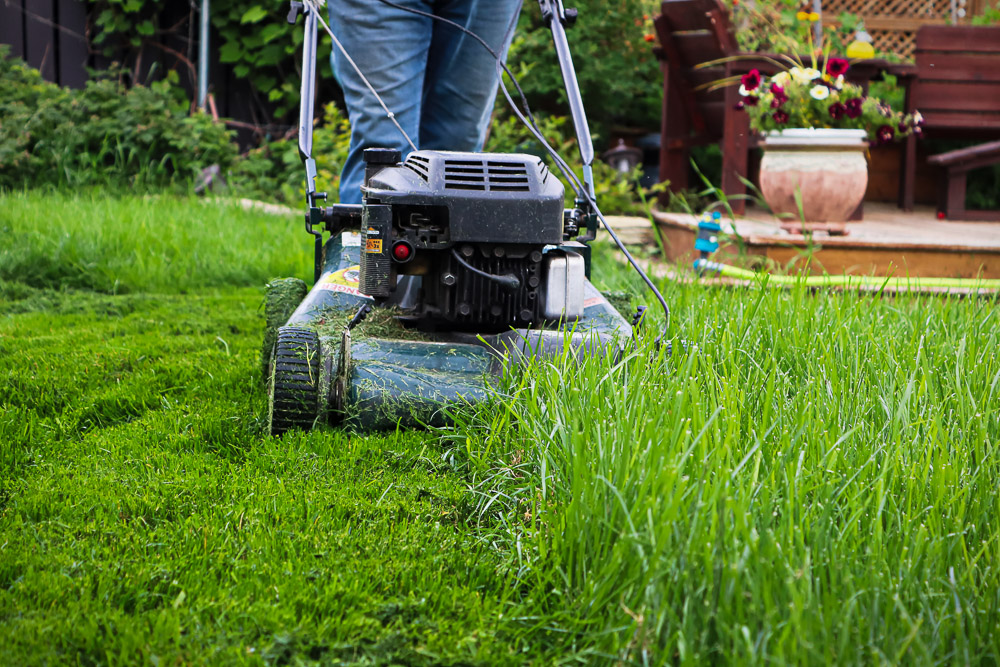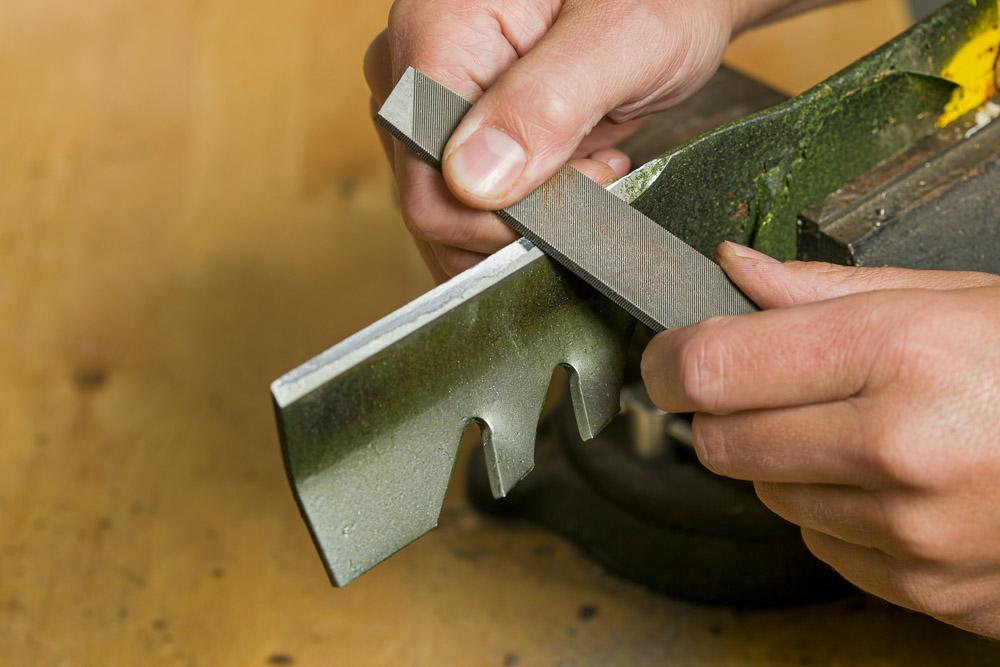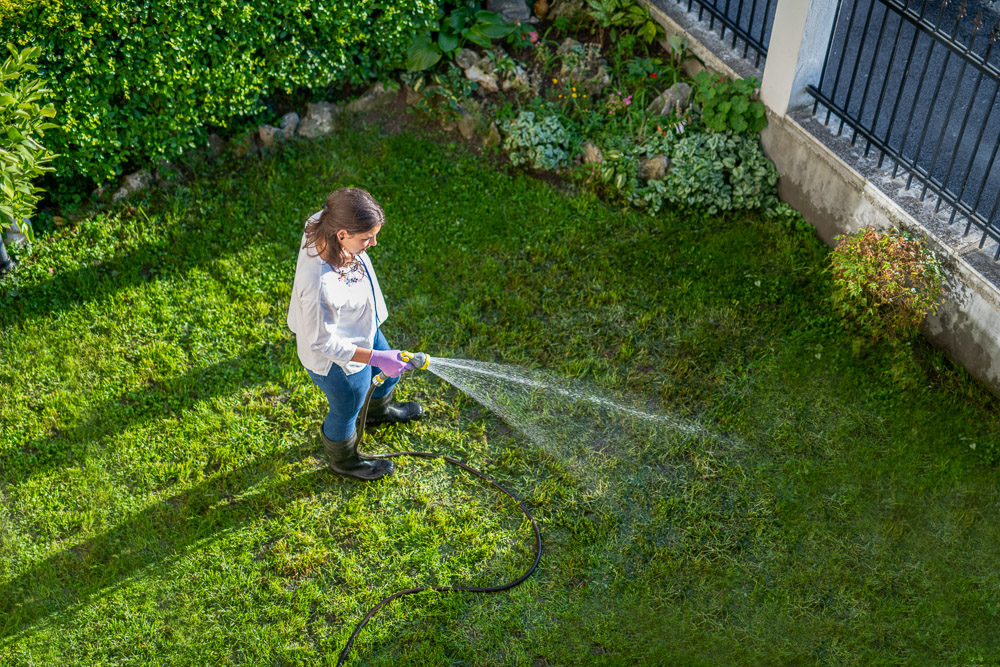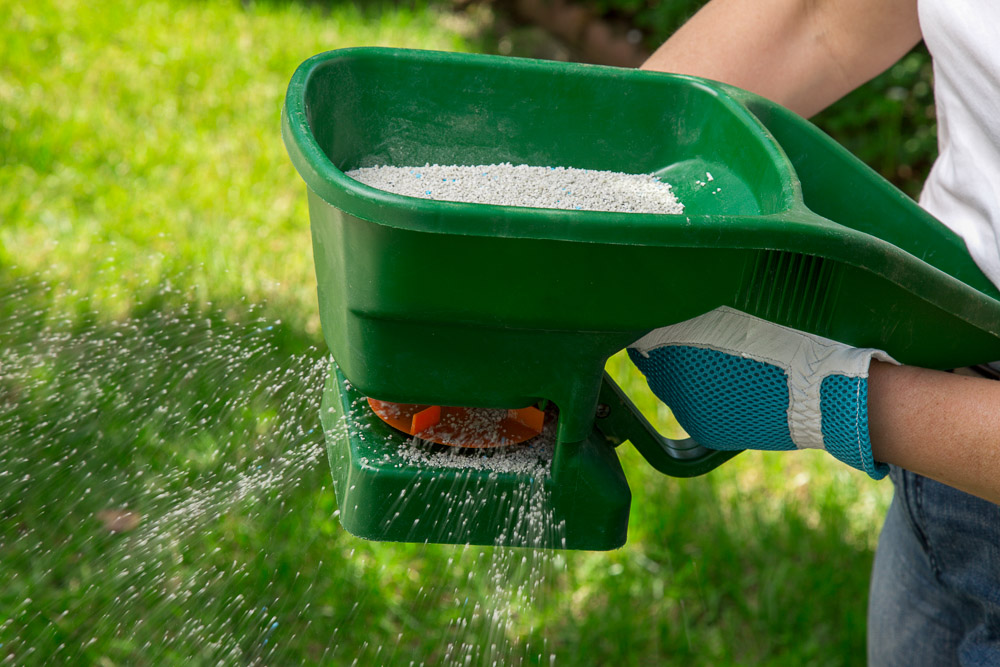Some common lawn practices really aren’t necessary – and in some cases, counter-productive.
Whether it’s because they seem like good common sense or because “I’ve just always done it that way,” rethinking these practices can improve your lawn’s health and save work and expense at the same time.
5 lawn jobs to rethink:
1. Mowing too short

Akchamczuk / iStock / via Getty Images
Many lawn-owners cut their grass to within an inch of the ground, figuring that keeps it neat, makes the lawn easy to walk on, and maybe even means less mowing.
But “scalping” is a bad idea for these four reasons:
1.) Shorter blades translate into less chlorophyll in each grass plant, which means less fuel for the roots to generate new growth.
2.) Short grass allows the soil to dry out faster, which is bad news for a lawn trying to cope with a hot, dry summer.
3.) Weeds germinate better and get off to a faster start when taller grass blades aren’t in the way to shade out sunlight.
4.) Scalping stimulates growth as the grass blades try to recover, increasing moisture and nutrition needs. Instead of having to mow less often, it’ll likely mean mowing more often.
A good rule of thumb is to maintain cool-season grasses about 3 inches high and to mow often enough that you’re never taking off more than a third of the blade height at a time.
You might find that the evenness of a mowed lawn is what makes it look good and that it looks as neat at 3 inches as it does at 1-2 inches.
Read more on lawn mowing
2. Bagging the clippings

JulPo / E+ / via Getty Images
Also rooted in neatness, many lawn-owners use bagger attachments to remove clipped blades from their lawn, much like vacuum cleaners are used to clean debris from indoor carpets.
A secondary concern is that if not removed, the clippings will build up the soft, spongy layer at the blades’ roots (thatch) and impede growth. Research has found, though, that grass clippings don’t cause thatch buildups. They quickly break down in a healthy lawn and actually return nutrients – especially nitrogen – to the soil. Over the course of the season, these naturally decaying clippings contain the nutrition equivalent of a fertilizer application.
If you’re mowing as often as you should (see above), you’ll get small clippings that quickly disappear into the lawn, especially if you’re using a mulching mower. Rake or bag only if you’ve fallen behind and are getting so many large clips that they’re creating mats that threaten to suffocate the grass underneath.
Read more about thatch in the lawn
3. Not sharpening the lawnmower blades

BanksPhotos / E+ / via Getty Images
Besides leading to ragged, uneven cuts, dull mower blades are bad for lawn health.
Dull blades result in bigger, rougher, more blunt cuts than the cleaner, fast-healing, smaller cuts made by sharp blades. Their action can be more like tearing the tops off grass plants than cutting them. These ragged cuts allow more moisture to escape the blades and increase the likelihood that disease will get in.
Most mower user manuals recommend sharpening your blades about every 25 mowing hours or at least twice a season.
Read more on why sharp, clean mower blades are important
4. Watering too often or too shallow

ArtistGNDphotography / E+ / via Getty Images
The effects of not enough water are obvious when a lawn goes from green to brown. But too much water also can pose a threat. Irrigating a lawn that’s already damp is not only wasteful but can saturate the soil enough to stunt growth, increase soil compaction, and encourage lawn diseases that thrive in damp conditions.
A more subtle threat is when irrigation systems are set to water for short periods every day. That dampens only the soil surface, encouraging roots to stay high in the soil instead of penetrating deeper. The end result is shallow-rooted grass that’s more susceptible to drought injury (and death) if the regular waterings are missed or stopped.
A better option is to water only when the soil is going dry, which varies based on the changing weather. When water is applied, enough should go on to dampen 4-6 inches deep.
Read more on watering the lawn
5. Over- or under-fertilizing

Evgenyb / iStock / via Getty Images
Lawns can go thin and weedy when they’re lacking nutrition, but too much fertilizer can encourage some lawn diseases and even burn the grass.
Soil tests, available through most state land-grant universities and their Extension services, give a read on existing soil nutrition as well as recommendations on what nutrients are needed.
Getting fertilizer just right then depends in part on what kind of fertilizer you’re using. Types that are high in water-soluble or “fast-release” nitrogen work well for about eight weeks, meaning four or more applications a year are needed for even, optimal growth. Types that are higher in “slow-release” nitrogen are more paced and effective for 12 or more weeks, meaning fewer applications.
GreenView’s Fairway Formula lawn fertilizers, for example, use a patented formulation of slow-release nitrogen that produces good results with just two applications per year.
GreenView’s Annual Plan takes the guesswork out of when to apply by automatically sending subscribers the right product at the right time.
Read more on how to choose the right lawn fertilizer